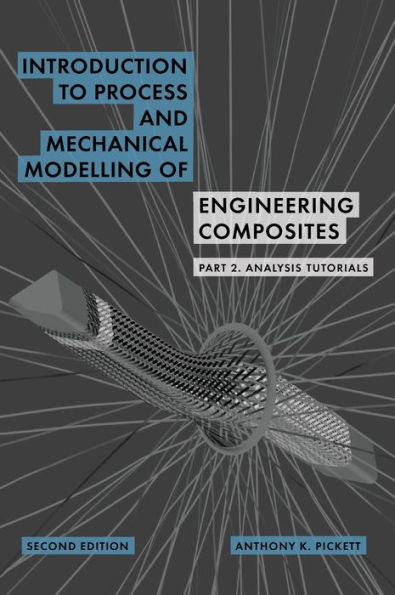This book presents a set of tutorials and exercises that I have developed over a number of years as part of a Master's level course on composites modelling. It is also intended to complement a textbook that I recently published covering theoretical aspects and analysis of composites manufacturing (process) and mechanical modelling.
The aim of these tutorials is to introduce the student to analysis possibilities for engineering composites using, mostly, the general-purpose finite element (FE) method. The first tutorials introduce FE meshing and apply some different material models for isotropic and composites analysis. More advanced composite models with failure are then presented and applied to a 2D and 3D structure. Different solution methods are covered including linear and non-linear implicit analysis and explicit analysis, and some advanced topics include contact and linear eigenvalue analysis for frequency and buckling problems. Classical laminate analysis is also covered, and the last three tutorials study textile mechanics with TEXGEN, kinematic and FE drape simulation and infusion analysis for manufacturing.
I am aware that licensing can be difficult for any student who would like to experiment with commercial software. For this reason, I have selected codes that are easily accessible from the web and suitable for student study. These include the open-source FreeCAD and general purpose CalculiX FE codes. Several tutorials apply LS-DYNA which does require a license; however, this code has a free pre- and post-processor so models can be built, and I have provided a website with all datasets and results files so post processing is also possible. LSTC, who develop LS-DYNA, do have special conditions for student licenses. The other laminate analysis, meshing and drape codes are freely available, and LIMS, which is used for FE composites infusion analysis is available for academic studies. It is hoped that knowledge gained from these tutorials will provide a useful starting point for composites analysis with other codes and help to better appreciate their capabilities.
Each tutorial is self-contained and has worked examples and student exercises that should take about two hours to complete. I have tried to organise these so that no previous knowledge is required to get started and then progress through to more challenging analyses. Within each tutorial I have added some relevant background information to help understanding of the topic being covered.



